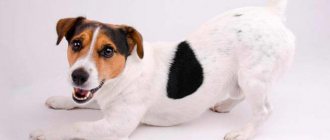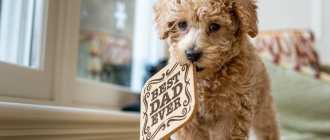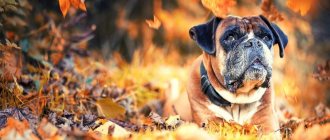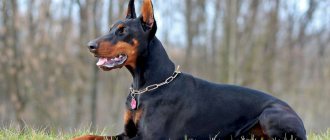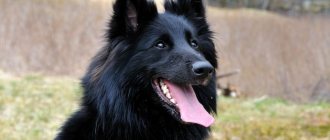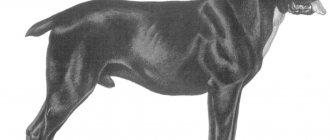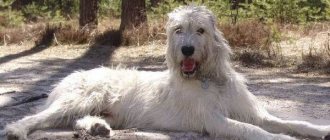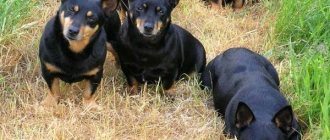12.04.2013
Breeds of horses and ponies
The height of a Friesian horse is above 150 cm.
The suit is only black. Mares have a small mark - an asterisk. Stallions have no markings.
Exterior - the Friesian horse is very elegant, tall, long-legged. And although the Friesian horse is quite massive and large, it still looks royal.
The horse's warehouse is harness. The long back is often soft. Slightly stretched but wide body. Large, elongated head with long ears, beautifully curved neck. The most important distinguishing feature of the Friesian breed is the thick, shaggy brushes that flow down to the hooves; this is called “friesianness.”
Despite all their grace and elegance, Friesian horses are heavy-duty horses.
History of the Friesian breed
The Friesian horse breed is one of the oldest in Europe. She was born in one of the northern provinces of Holland - Friesland or Frisia. Thanks to excavations, the remains of ancient horses were discovered, which are considered the ancestors of the present-day Frisians.
The basis of the appearance of the modern frieze was formed more than seven centuries ago, but initially these were still different horses. Previously, the requirements for these animals were different from modern ones.
What was needed were strong, hardy, efficient, albeit unsightly, horses. Priorities were set, and Friesian horses were the best suited for plowing and war - the main occupations of that time.
The hundred-year wars throughout Europe made their own adjustments over time. The standard of living and areas of activity changed, knightly tournaments became popular, and heavy carriages appeared as transport.
More attention was now paid to the external characteristics of the breed; unsightly and short horses no longer corresponded to tastes. But, thanks to the Crusades, beautiful horses were brought from the east - noble and graceful.
During the conquest of the Netherlands by Spain, from 1569 to 1648, the blood of the Frisians was infused with the blood of Barbary and Andalusian horses, which made the breed powerful, majestic and trainable.
Although the Frisians were not purebred trotters, it was among them that individuals capable of briskly trotting for a long time began to appear most often. These were beautiful and energetic horses, now capable of not only walking in harness, but also under saddle.
Their noble bearing, strength and endurance came in handy for ceremonial processions. To this day, friezes are a decoration of the Golden Carriage for Queen Elizabeth.
But, the times of kings and nobility have passed, and all the paraphernalia associated with that luxury has become unnecessary. Ordinary people again began to need ordinary working horses, without pretensions to beauty and breed.
And only thanks to sincere connoisseurs, the Friesian horse has been preserved as a piece of history and a national treasure of the Netherlands. In 1879, a stud book was formed. Today there are more than 60 thousand individuals, half of which live in Holland.
Description of the Friesian horse
Like any other breed, Friesians also have their own description and requirements that fit the standard. So the height of the horse must be at least 150 cm. This is the only breed of horse whose color must be exclusively one color - black.
Only a small (up to 3 cm) white spot on the forehead of mares is allowed. Because of their beautiful, rich black color, Friesian horses look very impressive, as you can see by looking at their photos.
As for the physique, the Frisians are not too large and bony. The horse's constitution is rough, with a wide body, a long and often soft back. The legs are a little long.
But the loose forms are visually concealed due to the elongation and high extension of the neck, which in friezes has a beautiful curve. The horse's head is not large, with a straight profile and high ears, expressive large eyes.
As can be seen from the name of the breed, horses always have long friezes on their legs, flowing from the hock to the large hooves.
In addition to the brushes on their legs, horses of this breed are especially proud of their mane and tail, which are not trimmed throughout their lives and look very beautiful both falling and fluttering while running. It’s not for nothing that these horses are called “black pearls”; they really are like noble and elegant jewelry.
In addition to the exterior, great importance is also paid to the horse’s stride - it must be strictly four-beat. The trot should be push-pull and the front legs should be straight; the hind legs should work and bend well under the belly.
The character of the Frisians is very lively, energetic, but at the same time submissive, balanced and good-natured. These horses combined the qualities of hardy and calm draft horses, and the activity and liveliness of riding horses.
Use of the breed
Regardless of their carriage purpose, Friesians are used as universal horses. Heavy-duty animals easily cope with complex riding elements of driving, take part in horse riding competitions, and perform acrobatic stunts in the circus.
In modern horse breeding, the Friesian breed is positioned more as a decorative breed. Horses are often requested for filming in historical films, photo shoots, and ceremonial events. The animals look spectacular, harnessed to a carriage. When running or walking, the tail, which has grown almost to the ground, creates an ideal picture for a photo or video. The black color and lush hair are the hallmark of the breed.
Horse riding enthusiasts will not find a more flexible and obedient horse. The activity and liveliness of Friesians is balanced by such character traits as endurance and agility.
Care and maintenance
The Friesian horse breed is unpretentious. They easily tolerate climate change and get sick less often. The presence of lush brushes on the legs, contrary to the opinion of many, does not lead to the formation of midges and other diseases of the legs; on the contrary, all the dirt and bacteria remain on the friezes.
It is necessary to clean your feet after a walk. The sawdust bedding will naturally dry the brushes on your feet and prevent the growth of infections. As for the beautiful mane and fluffy tail, each owner chooses for himself how often he can take care of this “dowry”.
If you have the opportunity to devote time every day to the beauty of the animal, then you can braid the mane, bangs and tail at night, and unbraid and comb it during the day. If there is no time for this, then you can braid and leave the horse in this form for several days, then unbraid and comb it.
After such simple manipulations, the mane and bangs will become not only silky and shiny, but also delightfully wavy. It is enough to treat the tail 2-3 times a week with a special conditioner and comb it well.
The photo shows a Friesian horse with a foal
To care for black wool, it is enough to brush it daily and spray it with conditioner 1-2 times a week. It is necessary to trim and lubricate the hooves once every month and a half, and sometimes less often (if the hoof horn grows slowly).
So that the farrier can easily and quickly trim the hooves, you can soften them by spreading a thick layer of clay 2-3 hours before the procedure, this will soften the soles.
Friesian horse price and owner reviews
buy a Friesian horse in almost any metropolis. The bulk of sellers are concentrated in the Netherlands, but animals can be delivered anywhere in the world. average price for a Friesian horse It all depends on the pedigree.
On one of the Internet forums, people left their reviews about Friesian horses , we will give examples of some of them. Nadezhda V.N. from Samara writes: “Friesians are undoubtedly the most beautiful and majestic of all horses!
They combine power and grace! They are perfection!" Vladimir S.Yu. from St. Petersburg - “Friesian horses are very beautiful and strong, unpretentious and not picky. Young individuals grow very quickly, communicate with their owners with pleasure, are very friendly and obedient.”
Once you meet a frieze, you will never be able to forget him. This aristocratic beauty, proud posture and hot gaze of big black eyes penetrates the soul of everyone and makes everyone fall in love with themselves to infinity.
How much do Friesian horses cost?
How much does the Friesian horse breed cost? On average, Friesian horses cost from 500 thousand rubles. , this despite the fact that the price is almost minimal. In such advertisements from private owners you can run into scammers, because basically this is how they sell animals without documents. To purchase a purebred and proven breed, a healthy horse, you need to look for an animal from breeders at the most famous stud farms. The price, of course, can vary significantly upward.
The most expensive are young mares or foals. The price of a Friesian horse may also differ depending on the location of the selling club. Before choosing an individual, you need to carefully familiarize yourself with it in person and look at its appearance, study reviews about the Friesian horse.
Video
Friesian horse: conditions of keeping and breeding prospects
Friesland or Frisia is one of the northern provinces of the Kingdom of the Netherlands, which gave the world one of the most beautiful horse breeds. The Friesian horse was important to this region in the past, and today is a sought-after ornamental breed. Despite the threat of extinction in the past, today the Friesian horse is experiencing another dawn.
Application of friezes
Friesians survived as farm horses, especially in the villages of Holland.
Friesians are used as tourist horses, in the circus, dressage, driving and carry ceremonial carriages.
Friesian horses are also used as decorative horses; they are very popular for photo shoots.
Photo sessions with friezes are very popular
History of the Friesian horse breed
The appearance of Friesian horses is a long process that began in the Middle Ages. Horses with this name are mentioned in historical chronicles from thousands of years ago, but according to the description, the Frisians of that time had very little in common with the modern breed. Then they were unsightly, but rather massive animals that performed well in battle (under a heavy knight-at-arms) and in agriculture.
Due to the fact that the Netherlands has been at the very center of European economic and military-political life throughout its history, the selective selection of local horses was carried out quite actively, taking into account the gradually changing conditions and requirements for horses. The Friesian horse breed was improved by horses brought to Europe from the Middle East, as well as from other regions of Europe itself.
The breed acquired its modern appearance in the 16th-17th centuries, when the Netherlands was under the military-administrative control of Spain. During this period, Friesians were actively crossed with Andalusian and Barbary horses. Since the army no longer needed powerful horses that could withstand a knight clad in armor, the task was to make a lighter and faster horse. The result was a less powerful, but still majestic and at the same time agile horse. It turned out to be ideal for ceremonial carriages and some equestrian disciplines of the time. At the same time, the horse was quite suitable for military purposes.
During the 17th and 18th centuries, the Friesian horse, the photo of which you see here, was at the peak of popularity, but gradually interest in it began to fade away amid the growing popularity of pure riding horses. By the second half of the 19th century, the breed was on the verge of extinction. Dutch horse breeders could not allow this to happen, and in 1879 they created a stud book for the Friesian horse. Interestingly, this was the first such document in the history of the country, and it was decided to include not only purebred Frisians, but also crossbreeds (albeit in a separate list).
Unfortunately, it turned out that the very fact of the existence of a stud book is not enough to preserve the breed. After only two decades, only three new horses could be entered into the book, which indicated the catastrophic state of the breed. Enthusiasts had to urgently establish the Friesian Horse Society and create a livestock restoration program.
At this point, it became clear that the number of remaining livestock was already too small to reverse the negative trend. It was possible to save the breed only at the cost of sacrifice: the elegant appearance had to be neglected, bringing more strength and endurance to the Friesians. As can be clearly seen in modern videos, the Friesian horse turned out to be less graceful, but more massive and with shorter legs.
For some time this was enough to delay the extinction of the breed, but already in the 1960s the Friesian horse was again on the brink. And this despite the fact that the breed was taken under the protection of the royal family of the Netherlands.
Oddly enough, the breed was saved by the reviving interest in ceremonial horses in Europe. Europeans again needed majestic horses with a noble exterior and natural intelligence. But it is precisely these features that Friesian horses have always been famous for.
Some historical facts
The country in which the tribe appeared is Holland. An ancient historian named Tacitus wrote in his manuscripts about the Frisian horse tribe of those times, it says that they are strong, powerful, but slightly ugly. Through evolution and hundreds of years, the royal horses were ennobled and aesthetically improved through natural experiments in crossbreeding. The Middle Ages knew this genus of animals as heavy horses that participated in battles, were not afraid of anything and were very large individuals in comparison with other breeds. Such horses were previously used for crusades. After historical events and campaigns, eastern horses also contributed to the Friesian category.
During the times of superiority and prosperity of Ancient Rome, a subspecies of horses of the Friesian category made their contribution to horse breeding, and it was they who entered the detachment of Roman legionnaires. A little later, after the departure of the Romans, the Frisians filled and appeared in the Norwegian lands and in the vastness of England, with the help of trade routes. In those lands, the subspecies was very actively crossed with local horses to improve the qualities of the animals. A smaller copy of the Friesian horse lives in Great Britain; such horses are called ponies because they are not very tall. This breed is called Gudbrandsdal, it is a Norwegian representative, but in the UK, these are Dale and Fell ponies. The Friesian breed is also considered the parent of the Shire tribe.
For about 80 years, starting in 1568, the Friesian breed was influenced by other tribes, which made a great impact. Thus, the Andalusian breed was able to give majesty to the horse. At the same time, the rod was increasingly used as a carriage house, since it was not needed by knightly cavalry and Andalusian horses were used under saddle.
The Baroque times are no less significant for the subspecies and are distinguished by the fact that the tribe became royal. On it, kings and nobles went out in parades, and were like decoration. Several years have passed since Friesian horses fell into the hands of ordinary people. The second half of the 19th century is characterized by a decline in the number of the subspecies. Friezes could not compete with other species that were bred for speed. Thus, there were fewer and fewer stallions and in 1913 there were only 3. But fortunately the breed was preserved.
The year 1965 is famous for the fact that breed lovers managed to breed even more horses from a population of 500 to propagate the breed. Because in the 60s there was a crisis for the breed and they began to eliminate it again.
Today, the interest of many people in the breed has grown significantly. Such horses perform in shows, circus arenas, etc. The Netherlands uses friszes to open the session of parliament, and friszes also represent official visits of the king and his family. In the West, horses are used in carriage sports.
Friesian horse - photo and description
Looking at the photo of the Friesian horse breed, it is not difficult to notice that it is not distinguished by its large size (height at withers 150-160 cm), but is famous for its very harmonious physique. The horse has a long neck with a beautiful curve, a strong back, a wide loin, which goes into a long croup. The legs are very well developed, although not very long, the front hooves are wider than the hind hooves.
The Friesian breed is notable for the fact that its standard allows only one color - black. At the same time, mares are allowed to have one white star on their forehead, but stallions have markings that are unacceptable in principle.
One of the characteristic features of the appearance of Friesian horses is their thick hair. Below the knees, their legs are covered with long, thick hair (the so-called “friesians”), which gives the Friesian horse galloping in the video an absolutely bewitching look. These horses also have very thick and long hair in their mane and tail. Among owners of Friesian horses, it is not customary to trim their mane and tail, but rather to show off their length and thickness. A galloping Friesian horse with its mane, tail and friezes on its legs fluttering in the wind makes an indelible impression.
To enter a Friesian horse into the stud book, it is assessed not only by exterior characteristics. The quality of the walk and trot are also of great importance. The correct Friesian walk is certainly four-beat, and the correct trot is strictly two-beat with a long “flight” phase. With all this, attention must be paid to exactly how the horse’s legs move and look during the walk and trot.
Friezes in the service of man
The Friesian horse breed was saved due to increased interest and attention in equestrian sports. Such qualities as intelligence, friendliness, majesty, and nobility of appearance, which are inherent in many individuals belonging to the breed, have become in demand. Now Friesians are used very widely. They star in films and perform in the circus arena. These animals are used for horse riding. Their calm disposition will appeal to riders who have only a little experience in equestrian sports. The Friesian horse takes an active part in many equestrian sports, such as driving, dressage and eventing.
Breeding work carried out in the modern world is aimed at enhancing sporting qualities. The first place is given to a good-natured character, an elegant physique and a quick mind. Today, the population of this breed has been completely restored. All Friesian horses must be registered in a stud book, divided into sections. Each of them has its own characteristic color for registration forms. This will allow you to determine the pedigree status of a stallion or mare, even in the absence of knowledge of the language.
Conditions and diet of Friesian horses
Friesian horses are among the noble breeds that are usually kept in individual stalls in stables, but not in herds, as is often practiced with oriental breeds. The stable must meet all requirements for the level of comfort. It should be spacious, warm and light. Good ventilation is required, but drafts are unacceptable.
Individual stalls with feeders are arranged according to the general standard. The room temperature should not fall below 16 degrees, but in the summer, if possible, you should fight the heat, not allowing the air in the stable to heat above 20 degrees.
Being a typical pampered breed, the Friesian horse cannot be content with hay and grass alone. Her diet must also contain grains (whole oats, bran, crushed barley, wheat and corn), vegetables (raw carrots, beets and potatoes in any form) and mineral supplements (including table salt). A small amount of silage is also allowed. At the same time, it is prohibited to introduce compound feed for cattle and other animals into the diet, since it contains components that can harm the digestive system of the Friesian sport horse.
Feeding should always start with straw, hay or other roughage. Then you need to give the horse a portion of succulent feed and grains as a dessert. Meals should be three times a day in winter and two times a day in summer, and always at the same time.
Finally, it is worth mentioning that animals must have access to clean drinking water.
Since the breed is famous for its thick mane, tail and friezes, the Friesian horse requires special care for these elements of its appearance. They need to be brushed every day and washed regularly with shampoo. Once every few days, the tail and mane can be sprayed with conditioner, which makes combing easier.
Lifestyle in nature
The main distinctive advantage of Friesian horses is their uniqueness and versatility of use. The Friesian horse will become a leader in dressage and carriage transportation, and it will also be useful in diving and sports. The horse will withstand roads along the way with any conditions, be it smooth paths, sports fields, or absolute off-road conditions.
Habits and disposition
Friezes hide their absolute temperament under visual composure and calm. Due to this, this breed is ideal for regular amateur or professional horse riding. Such harmony of two irreconcilable character qualities, such as temperament and balance, is due to the fact that Friesian horses were obtained by crossing the Spanish type with horses and representatives of cold-blooded horses.
The versatility of a horse lies in its special habits and manners - they easily overcome any elements of dressage, in hand or with a saddle, it doesn’t matter. Moreover, such horses were originally used for harness. But the most important purpose of the Friesian horse is a carriage horse, which is famous for its perfectly developed trot. As practice shows, other breeds of horses can only be handled by professionals in the field of horse breeding; even a novice amateur can handle Friesians. It is difficult to find another breed of horse whose talents include the ability to cope with horseback and harness riding.
Care
Despite the fact that even an amateur can keep a Friesian horse on his estate, horses of this breed require strict and regular care. The main difference between such a horse is the brushes of hair on the limbs, which prevents the risk of bacteria and fungi. The long mane and tail are not difficult to care for. It is advisable to braid your hair, setting aside a few days to rest in a loose form. Spray hair with conditioner three times a week to make it easier to comb out. Wool requires the same care to prevent dander and dust from accumulating. Once a month (or once every 45 days), the Frieze’s hooves need to be trimmed and lubricated with a special hoof ointment. More often, horse breeders lubricate the hooves on all sides with olive oil, preventing the appearance of dryness and creases.
Nutrition
Due to a properly formulated diet, the horse’s health indicators such as blood pressure, body temperature, the functioning of internal organs and the respiratory system depend. Sufficient feed presupposes the required level of productivity and usefulness of the horse's use - muscle work. And it directly depends on metabolism and digestion.
Protein nutrition is necessary for stallions to build muscle mass, for producers to produce semen, and for mares to produce milk. Fiber and carbohydrates are important in a horse’s diet. Minerals and vitamin complexes are no less important in a horse’s diet. Young animals require calcium and phosphorus; in general, horses need vitamin B. In the summer, the Friesian diet should consist of green feed and fresh grass, in winter - concentrated, juicy and roughage, in particular oat and barley grains. Rye and wheat bran will improve the digestive system and metabolism, and increase appetite. Roughage is alternated with hay after an hour, which should contain perennial grasses, cereals and legumes. Beetroot, carrots and potatoes, as well as regular preparation of muesli, will be beneficial for frieze.
Advantages and disadvantages of the Friesian horse
Currently, the world population of horses of this breed is about 60 thousand, of which half are in the Netherlands itself. By modern standards, the number of Friesian horses is very high, that is, the breed is in great demand. Its popularity stems from the following characteristics:
- Magnificent exterior. The Friesian horse is valued all over the world, first of all, for its outstanding elegant appearance. The breed is simply ideal for use in ceremonies, as well as for tourism purposes (city carriage rides). By the way, although only black color is allowed in the breed standard, sometimes white foals are born. Of course, the white Friesian horse is a pure defect, which is not allowed for breeding within the breed, but it is no worse suited for use than black horses.
- Convenience for the rider. Usually such characteristics of horses as comfort for the rider are not mentioned when describing breeds. But in the case of Friesian horses, this quality is so noticeable that it deserves special mention.
- Flexible character. Friesian horses are known for their easy trainability, obedience and generally calm disposition, although their intelligence is hardly outstanding.
Unfortunately, the Friesian breed also has several significant disadvantages:
- Demanding conditions and feed. In order for a Friesian horse to develop well, have good health, look beautiful and work with full dedication, it needs to create the most comfortable conditions in the stable. In addition, she also needs to be fed according to a strictly structured diet, which includes a lot of components.
- Unsuitable for sports. Pictures of Friesian horses very rarely have a sports theme. The fact is that the breed is actively used in only one sports discipline - driving. And even here it does not have much success, being inferior to faster and more resilient breeds.
Prospects for breeding Friesian horses
Currently, friezes are used primarily as a decorative breed. Thanks to their very impressive, elegant appearance, friezes are excellent for use in the harness of ceremonial carriages and under riders at parades and other special events.
These horses perform very well in equestrian city park tourism, since even an inexperienced rider feels very comfortable in the saddle. For the same reason, Friesians are often owned by private individuals for the purpose of being used for country horse riding.
Despite the fact that the Friesian horse is excellent technically for country riding tourism, it is almost never used for these purposes. This is because on rough terrain the bushy tail and “friezes” on the horse’s legs very quickly become dirty and contaminated with burrs and other plant debris. In such a situation, a less elegant horse is preferable.
The inability to successfully use Friesian horses in equestrian sports also does not contribute to the growth of its popularity among racing fans. And taking into account the fact that only this category of private horse breeders in Russia can afford the maintenance of expensive Friesian horses to care for and feed, today the prospects for the breed in our country are very limited.
Of course, meat and dairy production in the case of the Friesian horse is also out of the question due to its low productivity and difficulties with care and feeding.
As a result, it can be stated that today the Friesian horse breed in Russia has an extremely narrow niche of use, and therefore is not very popular.
What is the character of the Friesian breed?
The main character trait of the Frieze horse is balance. These blacks have a gentle and friendly disposition. But, behind the external composure and calmness, an energetic temperament is hidden. This combination makes the breed popular both among horseback riding enthusiasts and among horse riding professionals.
The Frieze is an efficient and inquisitive horse, has an excellent memory and is easy to train. Relatively unpretentious animals easily withstand weather changes. However, these horses are selective regarding the composition of the feed quality.


